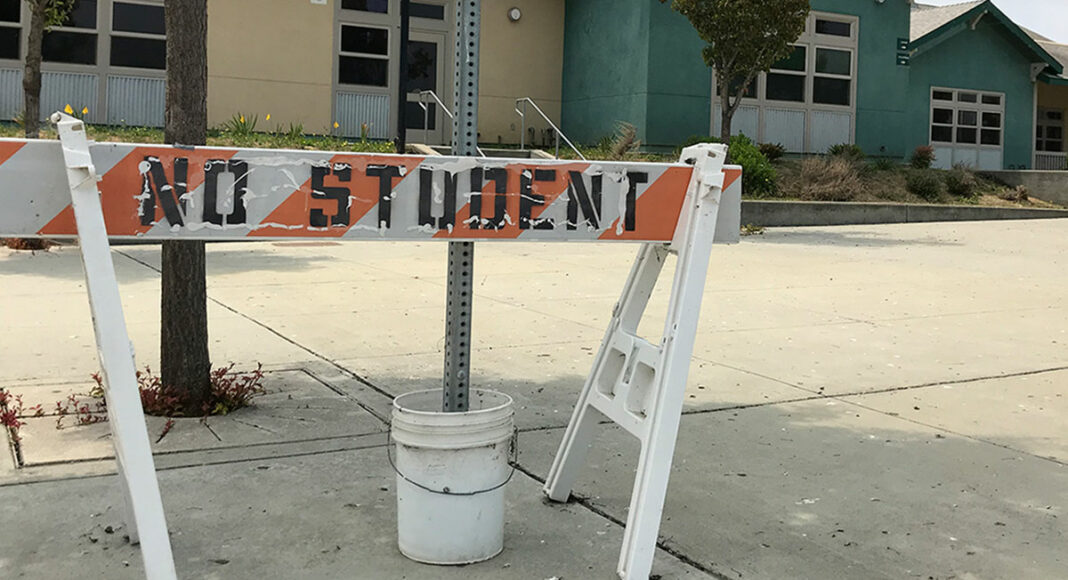California Gov. Gavin Newsom on Dec. 30 released a plan under which schools could reopen as early as February.
The plan, which streamlines the process of applying for a waiver to bring students back for in-person instruction, is bolstered by a $2 billion package of incentives to help schools pay for testing, ventilation systems and personal protective equipment.
Newsom says that the State Safe Schools for All plan is supported by evidence that children are less at risk for contracting Covid-19 than adults. It is also based on the notion that in-person learning is critical for young people.
“As a father of four, I know firsthand what parents, educators and pediatricians continue to say: in-person is the best setting to meet not only the learning needs, but the mental health and social-emotional needs of our kids,” Newsom said in a press release. “In the midst of this pandemic, my administration is focused on getting students back into the classroom in a way that leads with student and teacher health.”
Under Newsom’s proposal, some elementary schools could offer hybrid schedules, starting with transitional kindergarten through second grade, followed by grades three through six.
Newsom added that returning to the classroom is particularly important for the youngest kids, those with disabilities, those with limited access to technology at home and students who have struggled with distance learning.
But the plan has raised concern among some school officials, who say that it would be difficult to implement it so quickly.
Santa Cruz County Office of Education Superintendent of Schools Faris Sabbah says that many details—such as increased testing and vaccines—have yet to be hammered out.
Perhaps the most difficult hurdle, Sabbah says, is that teachers and other school employees have expressed concern about coming back to the classroom while the number of people infected with Covid-19 is so high.
“An important part of our work is to get support from our school community,” he said. “So being able to move forward with the plan without support from our teachers and our classified unions would be challenging.”
Another challenge is how teachers will deliver a hybrid model of instruction—both distance learning and in-person instruction—since it is almost certain that some families and teachers will not want to send their children back to school during the pandemic.
Pajaro Valley Unified School District scrapped a hybrid learning plan in November when the infection rate began to grow.
Sabbah said these plans could include a dedicated distance-learning teacher. They could also include offering streaming content.
“It is definitely challenging, but it is also something we have been working on and looking at,” he said.
Out of the $2 billion, PVUSD will be allocated $450 per student, totaling about $8.1 million, says district spokeswoman Alicia Jimenez. The district can apply for lower grants every month, she says.
Before Newsom made his announcement, PVUSD was already providing in-person instruction to small groups of students in seven “safe spaces” throughout the district.
These students are considered special needs, including those who were unable to successfully take part in distance learning.
Superintendent Michelle Rodriguez says that the district’s contingency plan already includes the Covid-19 safety measures suggested by the governor, including providing personal protective equipment, requiring physical distancing and providing hand-washing stations.
Moreover, the district has paid $4 million for upgrades to its heat, ventilation and air conditioning systems, and window replacements. Nearly all of this was covered by $20 million from the Coronavirus Aid, Relief, and Economic Security Act, also known as the CARES Act.
Also, student desks will include three-sided barriers when they do return to class.
Still, Rodriguez was hesitant about bringing students back to the classroom by Newsom’s Feb. 16 date. She said that, while the district plans to meet the Feb. 1 deadline to meet his guidelines, it is unlikely that classes will resume in February.
“While we agree with the governor’s need for in-person instruction and for appropriate mitigation strategies, we are concerned with the timelines of the new requirements, including weekly testing of staff and students,” Rodriguez said in a prepared statement. “PVUSD teachers, staff and administration want to provide in-person instruction to our students and we commit to doing so when local health conditions permit.”
Sabbah said on Monday that Newsom’s plan is not currently feasible, because it requires a case rate of 28 per 100,000 people or lower. Santa Cruz County has a case rate of 41 per 100,000, Sabbah said.
Also, Newsom’s requirement for more testing would be a “tenfold increase in our current surveillance testing capacity,” Sabbah said.
He pointed out that schools that have reopened for small-group instruction have shown few examples of in-school transmission.
“For these reasons, Santa Cruz County Superintendents and Santa Cruz County Public Health have concluded that weekly testing of students is not feasible nor is it necessary,” Sabbah said.
Currently, county schools offer Covid-19 testing at two locations, with a maximum capacity of 1,500 per week. The county is currently developing a vaccination plan for teachers and school staff, Sabbah said.













